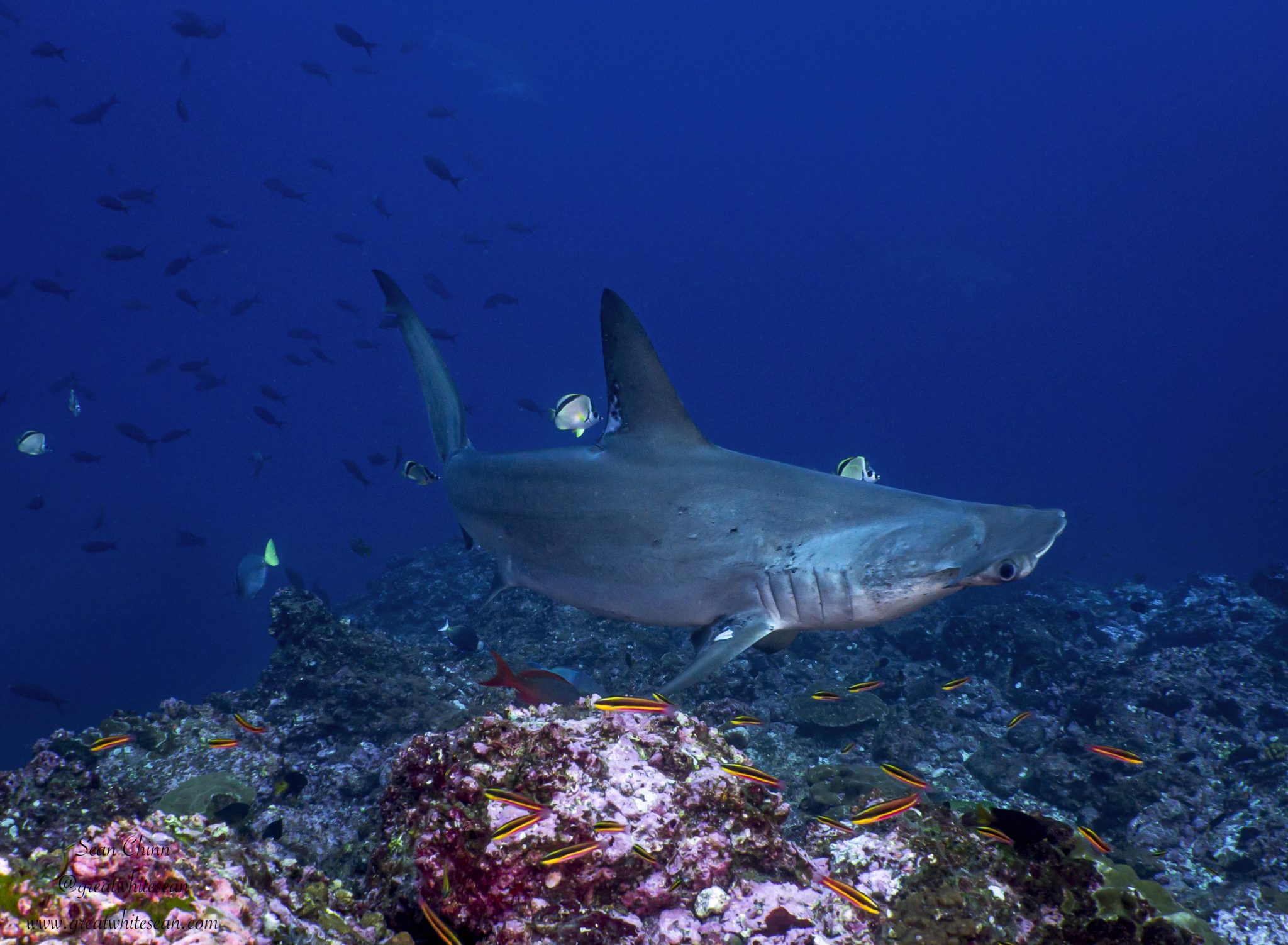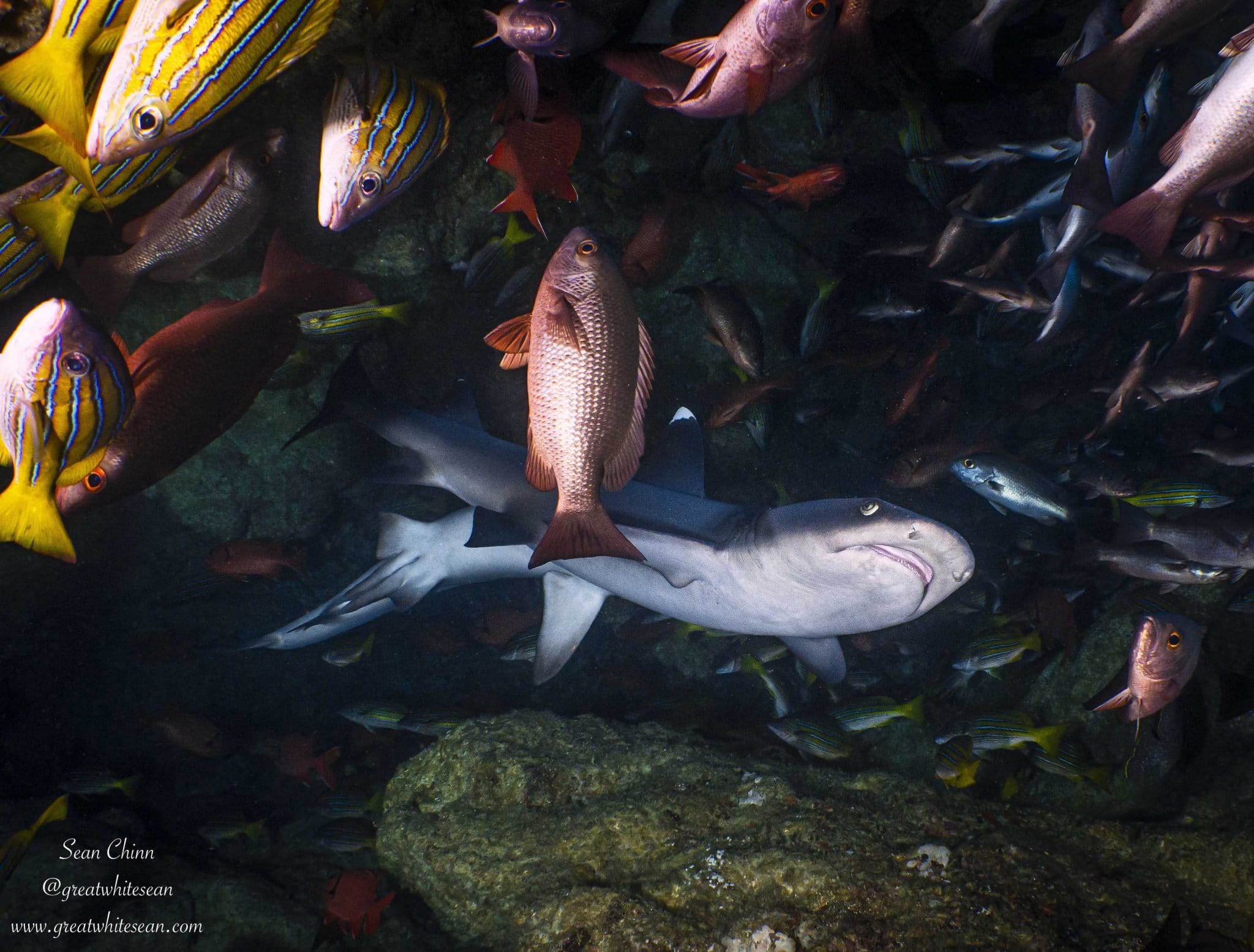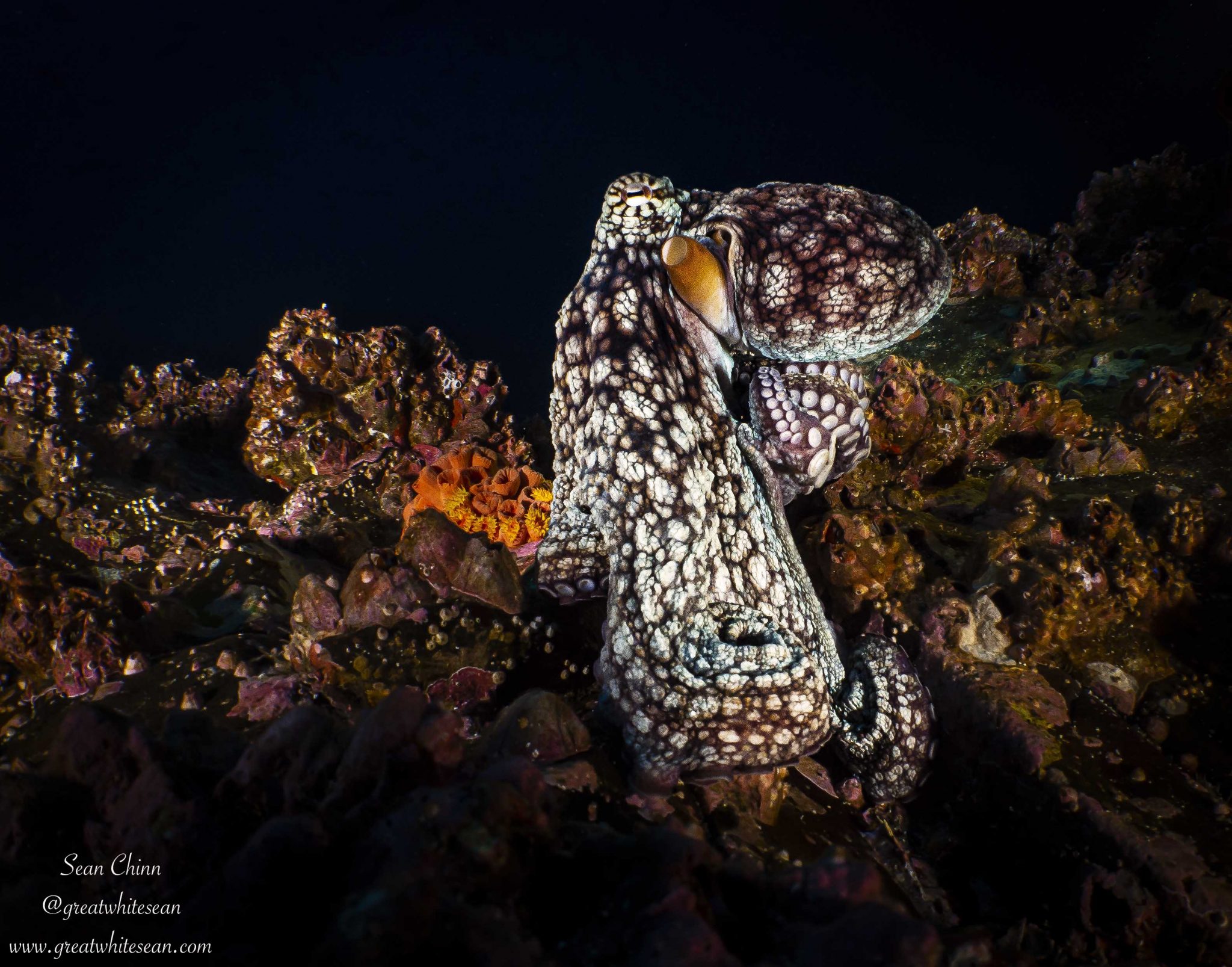News
Why diving Cocos should be at the top of your bucket list!

Missed part one of Sean’s blog on his trip to Cocos Island? You can read it here.
You ever expected so much from a place that you’ve then been left disappointed once you’ve finally had the opportunity to visit? Well, thankfully that didn’t happen with my visit to Cocos Island. Back in 2009 my friend was encouraging me to take up diving and showed me videos of his trip to Cocos to entice me. Ever since then and the start of my diving life, Cocos has been top of my dive bucket list. A lot of my expectations were alleviated slightly as a lot of his videos were the crazy whitetip reef shark night dives that are unfortunately not permitted anymore. However, I was still expecting a lot from a place that had an incredible reputation. Thankfully it lived up to that reputation and more.
The island itself had already won my heart on arrival. One of the most beautiful places I’ve ever laid my eyes on. Lush green rainforest broken up by cascading waterfalls drawing you down to a rugged beautiful coastline. It really is paradise on earth. Then I finally hit the water and quickly realised paradise continued beneath the waves. The checkout dive was a sure sign of things to come and a great entry into life diving at Cocos Island. A nice calm shallow dive at Chatham Bay but with lots of life to see and many whitetip reef sharks that weren’t as skittish as other places I’ve dived with them. Such a fun relaxing dive and then there it was!! My first Cocos scalloped hammerhead. Hang on, this is only the first dive and I’m only at around 7 metres or so. I really wasn’t expecting this, as thought I’d only see them at the deep cleaning station sites. It gave me a real buzz for the diving week ahead.
Sure enough the next dive at Manuelita Outside was really what diving at Cocos Island is all about. Hammers, hammers and more hammers!! Scalloped hammerheads were everywhere at the three cleaning stations along the wall with action pretty much starting as soon as we hit the water. While we perched up along the wall and looked on over the cleaning stations we watched as some would come in to be cleaned while groups patrolled the blue outside. What a fascinating spectacle to witness and it was only dive 2!!
The worry after such a crazy fantastic second dive was the expectations for the rest of the week. Was this a sign of things to come? Or were we to be left disappointed if we didn’t get another dive like that again? Luckily it was a great sign as the diving continued to deliver dive after dive through the week. I think I can only recall about 1 or 2 dives out of 21 where I didn’t see a hammerhead. They were prevalent throughout the week even making regular appearances on the more relaxed shallower third dives of the day.
Dirty Rock and Manuelita Coral Garden were my favourite dives of the trip and continually delivered for hammerhead action. What you learn when diving in Cocos is that if a dive site is hitting early, then it’s good to dive that site on more than one occasion. These two sites were on fire and delivered dive after dive. Not only were the hammerheads in abundance and made close passes. We also hit big moments at both sites that have gave me some of the best dives I’ve had in my life. In fact, one of the other guests I was diving with has been to Cocos 19 times and on one particular dive we had at Dirty Rock she said it was the best dive she has ever done there. I’d hit the jackpot on only my first visit to the island.
The dive started deep with numerous hammerheads at a cleaning station around 30 metres deep where I got one of my closest hammerhead passes. Hammerhead cleaning stations are typical of Cocos, whereas what happened next was completely unique and was the reason we all came up from the dive buzzing. As we shallowed up, we made our way around the rock to the other side and was greeted by BIG circling Galapagos sharks at around 16 metres. This was a completely natural encounter with no bait used as they swam past within touching distance at times. Juan Manuel has been a dive guide in Cocos nearly 20 years and had never seen anything like this before with Galapagos sharks. Such an incredible natural experience where my only problem was I couldn’t stay longer due to deco time and air consumption. I could have stayed there for hours with them circling between the group.
Close interactions with an eagle ray at Dirty Rock and the amazing school of bigeye trevally that we encountered on 3 of the 4 dives there added to the lure of this site. While Manuelita Coral Garden was a more relaxed shallow dive where around 20 metres was the max depth I reached. It was still equally exciting and gave me two of my most memorable moments. On one dive I had moved away from the group slightly watching the hammerheads circle around the reef through the cleaning stations. I then had a look over my shoulder and was surprised by a juvenile whale shark bolting along the reef at around 5 metres. It didn’t stay for long but was such an exciting moment as it was completely unexpected. That moment was joined by seeing mating whitetip reef sharks on one of the dives there. Another completely natural occurrence that left the whole group buzzing with excitement.
While we hit big at these particular sites, the rest of the diving we did around the island had its moments and delivered amazing dives throughout the week. I’m a sucker for a critter and in particular octopus and frogfish are some of my favourites. Seeing both these on what is a popular big animal destination adds to the appeal of a trip to Cocos Island. We also got lucky and got to see the elusive Cocos batfish that is endemic to this area, a really interesting and comical looking critter with its big red lips. The schools of snapper (particularly blue-and-gold snapper) and soldierfish were in abundance on most dives with the swim-through and caves at Submerged Rock creating memorable moments with them and the whitetip reef sharks. Marbled rays were always fun to see and friendly at times.
Overall, what an incredible dive trip to return to after a forced Covid break over the last year and a half. When expectations are so high but can still be exceeded you know you’re in a special place. From the first minute to the last, the dives continued to deliver and we were even given a parting gift on the very last moments of the very last dive. A huge school of bigeye trevally rose from the sandy bottom of Manuelita Coral Garden and engulfed the group, staying with us for our safety stop as if to ensure we have a reason to return. Something I would rush to do in a heartbeat.
More information
Find out more about Sean, his photography and his hosted trips at: www.greatwhitesean.com
Gear News
Introducing the TR-80, IR-50 and CS-30 Regulators from DYNAMICNORD

Whether you are a beginner or a professional diver – with the three new main regulators from DYNAMICNORD, everyone will find their favourite regulator. They all look super stylish.
Excellent performance with the TR-80
Quality and performance are the be-all and end-all for regulators. It is not for nothing that the TR stands for Tec Reg. The innovative design of the TR-80 guarantees absolute reliability – even in ice-cold waters.

Perfect breathing effort at 0.8 J/l / certified for diving in waters below 10 degrees / structural design made of solid brass for best cold protection / membrane-compensated design with dry seal of the first stage / reduced exhalation effort thanks to optimized exhalation membrane and bubble deflector / adjustable Venturi (dive/predive) and adjustment knob for individual inhalation comfort / innovative design of the front cover prevents free-flow in strong currents or when diving with scooters / design made of sandblasted brass, matt chrome finish / 2 HP and 4 LP outlets / mouthpiece made of high-quality, anti-allergic silicone for maximum comfort.


Amazing underwater adventures with the IR-50
The IR-50 is the top regulator for advanced and experienced divers. Natural breathing is the essence of this regulator.

Ideal breathing effort at 0.8 J/l /certified for diving in waters below 10 degrees / compensated membrane / adjustable venturi (dive/predive) and adjustment knob for individual inhalation comfort/ outlet valve and deflector for minimum exhalation effort and reduction of bubbles on the face / design made of sandblasted brass, matt chrome finish / 2 HP and 4 NP outlets / mouthpiece made of high-quality, anti-allergic silicone for maximum comfort.


The Workhorse – our CS-30
For diving centres and diving beginners – the workhorse stands for strong construction, reliability and robustness. Perfect for your training.

Optimal breathing effort at 0.8 J/l /recommended for diving in waters above 10 degrees / non-compensated piston / adjustable venturi (dive/predive) / outlet valve and deflector for minimum exhalation effort and reduction of bubbles on the face / design made of sandblasted brass, matt chrome finish / 1 HP and 3 NP outlets / mouthpiece made of high-quality, anti-allergic silicone for maximum comfort.


Octopus OP-30
The OP-30 is the ideal addition to all DYNAMICNORD regulators. It is identical in construction to the CS-30.

The TR-80, IR-50, CS-30 (DIN & INT) regulators and the Octopus OP-30 are available from DYNAMICNORD dealers and in the online store.
DYNAMICNORD – Your Outdoor Companion.
Marine Life & Conservation
Paul Watson Released as Denmark Blocks Japan’s Extradition Bid

Renowned anti-whaling activist Paul Watson has been released from custody in Greenland after spending five months in detention. Denmark’s Justice Ministry rejected Japan’s request for his extradition, citing insufficient guarantees that his time already served in custody would be credited against any potential sentence.
The 74-year-old Canadian-American was arrested on July 21 in Nuuk, Greenland’s capital, when his ship docked to refuel. His arrest was based on a 2012 Japanese warrant related to a 2010 encounter in Antarctic waters. Japan alleged Watson obstructed operations and caused damage to a whaling research ship during efforts to disrupt illegal whaling. Watson has consistently denied these claims, maintaining his commitment to marine conservation.
Denmark, which oversees extradition matters for Greenland, concluded that while the legal conditions for extradition were met, the lack of assurances from Japan regarding time-served credit made extradition untenable.
In a video shared by his foundation, Watson expressed gratitude and relief, saying, “After five months, it’s good to be out… and good to know they’re not sending me to Japan.” He added that the most difficult part of his time in custody was being separated from his two young sons.
Watson is a pioneering figure in marine conservation, known for founding the Captain Paul Watson Foundation in 2022 after decades of activism with the Sea Shepherd Conservation Society. His bold efforts to defend marine life have earned him widespread support, including from celebrities and conservationists. His work has also been featured in the acclaimed reality TV series Whale Wars.
Watson’s lawyer, Jonas Christoffersen, praised the decision, stating, “We are happy and relieved that Paul Watson is now free.” He added that Watson is eager to reunite with his family and continue his vital work.
The arrest occurred while Watson’s vessel, the M/Y John Paul DeJoria, was en route to the North Pacific with a team of 26 volunteers to intercept a Japanese whaling ship. His foundation described the arrest as politically motivated and emphasized that Watson’s actions were focused on ending illegal whaling practices.
Japan resumed commercial whaling in 2019 after leaving the International Whaling Commission, asserting that whale meat is a cultural tradition. Conservationists, however, continue to challenge these practices, highlighting their impact on marine ecosystems.
Despite the challenges, Watson remains steadfast in his mission to protect marine life and bring attention to whaling practices. His dedication to ocean conservation has made him a globally respected advocate for the environment.
-

 News2 months ago
News2 months agoIconic SS United States to become the World’s Largest Artificial Reef
-

 News3 months ago
News3 months agoBook Review – 52 Assignments: Underwater Photography
-

 Gear News3 months ago
Gear News3 months agoDYNAMICNORD – New German diving brand enters the British market
-

 News3 months ago
News3 months agoExploring Cenote El Pit: A Diver’s Dream
-

 Gear News3 months ago
Gear News3 months agoTry BARE drysuits (and maybe even win one!) this Friday with Sea & Sea at North West Dive Fest
-

 Marine Life & Conservation3 months ago
Marine Life & Conservation3 months agoBook Review: Coral Triangle Cameos
-

 Blogs2 months ago
Blogs2 months agoDive the Egyptian Red Sea this Autumn with Regaldive
-

 News3 months ago
News3 months ago2024 Ocean Art Underwater Photo Competition Announced






















